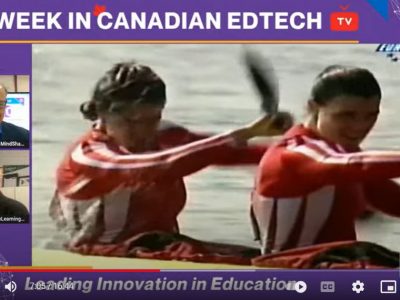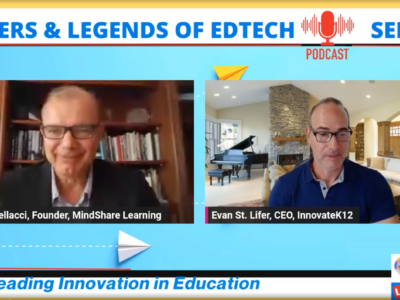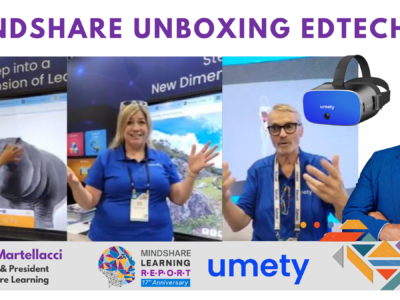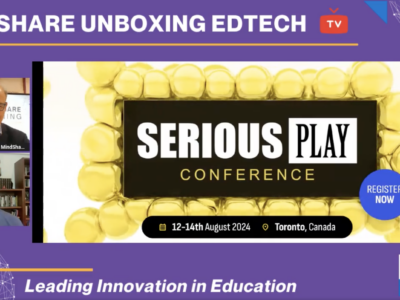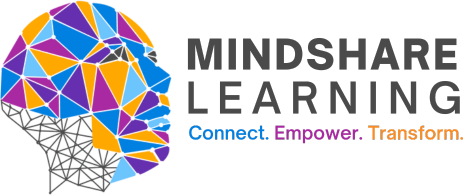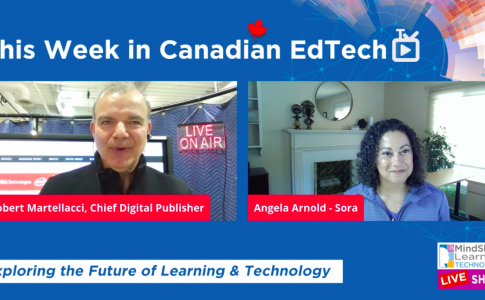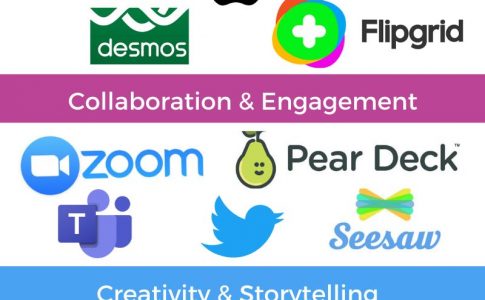Top 5 PD Tips for Enhancing your Teaching with Technology
You’ve just finished your year of teaching and you’re itching for a way to use technology more effectively in your classroom program next year. You’re aware of your need to modify and redefine the teaching and learning tasks you have designed for students so that you can use technology in ways that go beyond your ‘comfort zone’. You have fresh new ideas, an eager attitude and a desire to take some risks. But where do you go to get that PD you need to take your classroom technology program beyond the norm? Where do you go to move your technology integration into a more profound stage of teaching and learning? How can you take the technology you have and integrate it in such a way that students are liberated to do and learn things you never thought possible? Let me provide you with five ‘tips’ that you can use to take your nascent ideas and nurture them into powerful incubators for teaching and learning with technology.
Take a Risk – Teach Yourself!
I always find it interesting when teachers seek out others to help integrate technology more deeply into their classroom programs. If we expect to teach students how to learn then we should emulate this philosophy by learning ourselves, independent of a PD provider. Of course, learning with others is a great way to develop a collaborative mindset and to use the power of a team to delve more deeply into the power of technology to enhance your classroom teaching and learning. And it’s fun and powerful – no arguments from me! But this isn’t always possible, and sometimes we have ideas that might just take us beyond the mindset of a group. So why not? Why don’t you take that idea that has been sitting in the back of your mind for most of the year and run with it! There are so many resources out there to help you shape, develop and plan in detail a way to use technology that may very well end up being innovative.
Of course, there are some caveats to this approach. You need to keep the focus narrow and you should have a good idea of what kind of technology is required; it should be something that you can actually implement. But don’t limit yourself either. Dream big and explore; become like the student and look at the world from their perspective. What is it that you want to do with technology? How can you open up different experiences and different worlds that were never possible before the age of technology, especially now? What do you hope to have your students learn beyond the scope of simple knowledge acquirement? How can you utilize technology to deepen your students’ exploration of creativity, communication, critical thinking and collaboration? How can you make your classroom learning real-world by using technology in new and innovative ways?
Take the time to think of the technology you’re currently using in your classroom program. Are you making full use of the power of this technology? Can you think of a more innovative way to extend the teaching and learning in your classroom program? Have you thought about looking closely at the SAMR and TPCK models and asking yourself how you might modify and redefine how you are using the technology? Have a look at this presentation to help stimulate your thinking in this direction.
Summer Institutes and Professional Learning Networks (PLN)
Summer institutes are everywhere! Most districts will have summer institutes and many of them are open to educators from other districts. And what a way to collaborate and learn from one another! Perhaps you can even link up with a colleague from another district on a real-world project that both your classrooms can participate in and benefit from in the next school year. I’m sure a quick Google search with the relevant terms will help you find a summer institute that’s just right for you! Faculties of education often host summer institutes as well.
Indeed, educators are always willing to learn and there are a plethora of different institutes to meet your needs. Be forewarned though; don’t go for those institutes that have you sit and listen! Hands-on is more interesting, fun and you’ll come away from the experience far richer than from an experience that simply talks about what you can do with technology. And further, avoid the ‘teaching you how to use a tool’ sessions, unless you are a complete novice. And even if you are a complete novice, check out YouTube and third-party websites for ‘how to’s’ rather than sitting down and listening to someone drone on about how to use a piece of software or hardware. And isn’t it more liberating to teach yourself anyway?
The other option is to seek out Professional Learning Networks. The International Society for Technology in Education (ISTE) offers a huge number of these learning networks that you can participate in and learn from teachers who are focused on different areas of technology integration and can offer you deep insights into teaching and learning with technology. And they’re often facilitated by teachers passionate about that particular subject area in technology. Check out and look for a PLN that interest you here.
Online Conferences
Many different PD providers are making learning even more accessible for all by using online conferencing. You can learn via the comfort of your own home – or cottage! – via a Wi-Fi connection and your computer. And the focus doesn’t necessarily have to be technology. If you’re using technology to learn you are no doubt learning how you might incorporate this learning into your own classroom program. One such group – and a good example – that offers online PD in this way is EducationCloset. This group focuses on arts integration under the STEAM umbrella. And it’s teachers teaching teachers; a great way to connect and learn that is both practical and powerful facilitated by fellow educators from across the US and Canada. In fact, if you hurry, you can sign up for their summer STEAM & Arts Integration Online Conference. Check it out here.
There are of course other models and opportunities that are free however I’ve found that if you’re willing to spend a little money you can gain a certificate that you can add to your professional portfolio, and you can gather resources and connections that you might not gain from the ‘free’ online conferences.
Professional Reading
Okay, not so exciting maybe, but still very powerful! I believe that if you are not reading professionally you are not enhancing and deepening your professional knowledge, which we all know is paramount to becoming more effective in our teaching and learning contexts. If you’re unsure what you should read, Mindshare always provides you with a list of books that are worthy of your attention. You can usually find these books on the monthly Mindshare report, or you can check out previous issues for relevant reading material. Still stuck? Try the International Society for Technology in Education’s Resource page for some good reading material that’s practical, tried and true. You can find it here.
I also encourage you to begin an online professional reading program at your school in September, if one doesn’t already exist. In this way, you’re involving a community of learners and you can feed off of each other’s ideas and open mindsets. If you don’t have an online LMS to work with then consider using Ryver or Slack. Both are free – for the most part – and are great online communication tools that you can use to facilitate a professional reading club (PLC, really) at your school in an efficient and powerful way. And both offer mobile platforms to make your communicating and learning even more ‘real-world’ and ‘just-in-time’. Of course, given the context of this article you would focus on books that will cause you to think ‘outside the box’ with regards to integrating technology in your classroom or school. Think broadly and choose books that offer practical ways to integrate technology from authors who have actually used the technology in effective ways and can provide you with real-world scenarios.
Use the Power of Social Media and Podcasts
If you’re not using Twitter yet, what’s stopping you? If you’re not using Instagram and Pinterest yet, get out there and sign up! The great thing about social media is that it’s always ‘on’ and it reaches to the far corners of our planet. If you partake, share your own experiences. If you haven’t been involved in a Twitter chat or meet up, then try one out this summer! If you’re unsure where to go, search MindShare’s website for a list of the relevant hashtags or check this one out. In short, there’s a vast world of learning at your fingertips, as close as your phone that will help you delve into technology in new and meaningful ways. And just think, if you DM the Tweeter you can get some deeper insights! Educators love to share! And if you become really interested in collating and publishing your new professional learning, you can use Paper.Li, Tweeted Times, or Scoop.it to collate and publish your findings.
And there are podcasts. If you’re travelling, or if you are out and about in the car, you can easily listen to a podcast on various topics, including educational technology. I listen to a number of them and I don’t have a particular favourite, but I do like ‘Moving at the Speed of Creativity’ because it focused mostly on edtech and the insights are apropos for teachers wanting to extend their use of technology in their classroom, or school. You can download their podcasts here.
The five ‘tips’ above are by no means exhaustive. I’m sure you have your own personal way of learning about technology; regardless, the point is to learn, and learning takes effort and hard work. No new knowledge that has a profound impact on your teaching and learning with technology comes easily. May your summer be full of rich professional learning and development!
